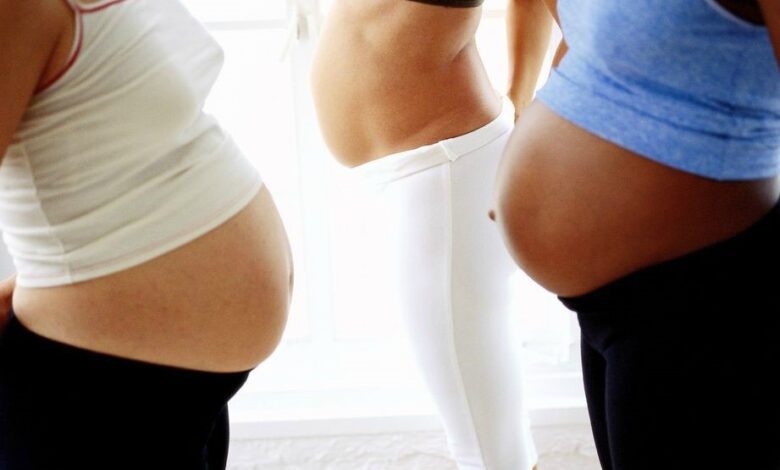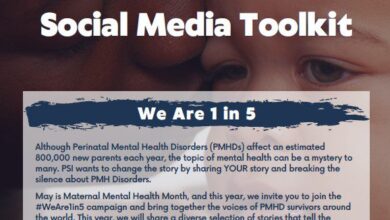Does Exercise Affect Fertility? – PROnatal Fitness

When you’re trying to conceive, you may be wondering how exercise affects fertility. This is a simple question with a rather complex answer that depends on many individual factors. So, the first piece of guidance is to reject any “one-size-fits-all” advice you may have heard because no one recommendation is right for all.
Another point to note is that Exercise provides many great benefits for parent and child, so if you can exercise at any level, that is highly recommended.
To address the intricacies of the topic of exercise and fertility, this article provides findings from current research so you can make the most informed choices for you and your family. In addition, it is important to listen to the guidance offered by your medical provider, who will have the most complete picture of your profile and health needs.
NOTE: This article uses gender-specific language because that is the convention used in the research.
What is Infertility and its causes?
infertility is defined as the inability of a couple to conceive within one year of trying to conceive through unprotected sex.
According to the latest World Health Organization report from April 2023, infertility affects 1 in 6 couples worldwideand this statistic persists among high- and low-income populations (WHO, 2023).
The causes of Infertility are equally attributed to female and male factors. Female factors include tubal, uterine, and ovarian disorders (ie, endometriosis, fibroids, PCOS) as well as endocrine system imbalances (some of which will be discussed in the next section). Male factors include low sperm production and quality as well as ejaculatory difficulties.
Because infertility is relatively common, efforts to understand modifiable lifestyle factors have been of interest. Exercise falls into this category, so let’s look at how exercise affects fertility.
How Does Exercise Affect Fertility?
In general, staying active and fit is more beneficial than being sedentary. However, it is important to remember that physical activity exists on a spectrum, and it appears that its effects on fertility can be “positive up to a certain level and has a negative effect above a threshold level of activity” (Gudmundsdottir, et.al, 2009).
But, these effects are partially dependent on a woman’s body mass index (BMI) before pregnancy. If a woman starts out overweight or obese, exercise can improve fertility outcomes. If a woman is underweight or “normal” weight and engages in more vigorous activity, she can exercise reduce fertility outcomes.
The mechanism behind the poorer results has to do with effects on the endocrine system. Exercise is a type of stressor and when that stress exceeds a certain level – repeated, longer sessions of vigorous exercise – it can lead to reduced energy balance (more calories out than in ), which reduces female reproductive abilities (Warren & Perlroth, 2001) .
In research, this has been especially true for athletes who participate in sports with an aesthetic component (ie, gymnastics, dance), likely due to the pressures of maintaining body fat and low weight.
The concept of high calorie-burning activity being harmful is also true for men. A “high amount of prolonged physical activity, with a large caloric cost, may be accompanied by a transient inhibition of reproductive function in both men and women (Redman, 2006).” Oxidative stress, which comes from more vigorous exercise (as well as caloric deficit) negatively affects sperm count. Endurance activities (ie, cycling, running) seem to be the most relevant type of exercise that lowers sperm count and may increase the incidence of erectile dysfunction.
How Can You Maximize Fertility Outcomes?
It’s coming out Moderately active men and women have the best reproductive function and fertility outcomes. Extremes at both ends of the activity spectrum appear to reduce fertility. Therefore, take a balanced approach. Exercising while trying to conceive is a smart option, as long as both partners are mindful to avoid prolonged exercise (>60 minutes of high-intensity or high-calorie-burning activity).
Note that these recommendations are only for the period in which you are trying to conceive. If your body is used to higher intensity exercise, you can return to it once you get the all clear from your medical provider (usually 1-2 months after successful fertility treatment). Just come back, so your body has time to adjust, before increasing the intensity.
Can Exercise Cause a Miscarriage?
If you’re struggling with infertility, it’s also natural to worry about the risk of miscarriage. For information on the relationship between exercise and miscarriage, see this post at Exercise Can Cause Miscarriage?
Sources
Gudmundsdottir, SL, Flanders, WD, & Augestad, LB (2009). Physical activity and fertility in women: the North-Trøndelag Health Study. Human Reproduction, 24(12), 3196-3204.
Morris, SN, Missmer, SA, Cramer, DW, Powers, RD, McShane, PM, & Hornstein, MD (2006). Effects of Lifetime Exercise on In Vitro Fertilization Outcome. Obstetrics and Gynecology, 108(4), 938-945.
Redman, LM (2006). Physical activity and its effects on reproduction. Reprod Biomed Online12, 579-586.
Warren, MP, & Perlroth, NE (2001). Hormones and sport-the effects of intense exercise on the female reproductive system. Journal of endocrinology, 170(1), 3-12.
World Health Organization, (2023, April 3). infertility. https://www.who.int/news-room/fact-sheets/detail/infertility
World Health Organization, (2023, April 4). 1 in 6 people worldwide are affected by infertility: WHO. https://www.who.int/news/item/04-04-2023-1-in-6-people-globally-affected-by-infertility





